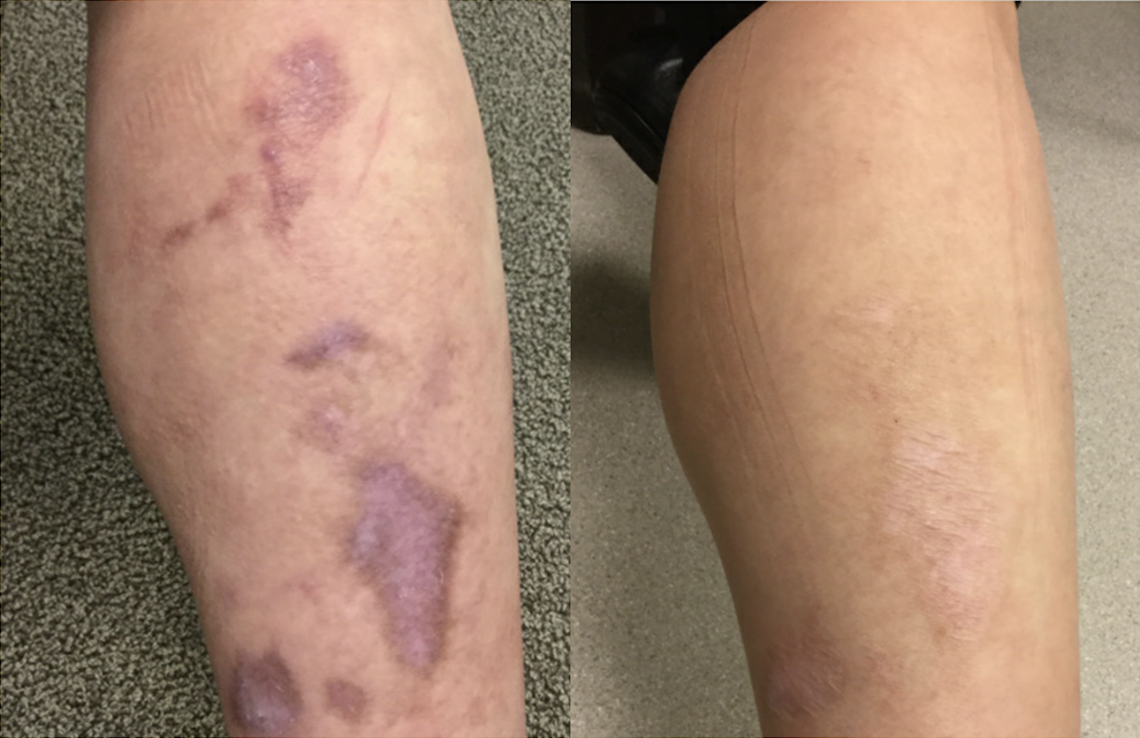Types of Scars
Scars come in many forms. No one treatment is able to best treat all scars. We offer many options in order to best treat any patients suffering from disfiguring scars. Scars are divided into many subgroups.
- Mature (white scars)
- Hypertrophic or keloidal (inflamed and thickened scars)
- Dark pigmentation (discoloration is not true scarring and usually slowly resolves without treatment)
- Erythematous (pink or red areas but not true scarring, usually slowly resolves without treatment)
Laser Options
Fraxel Re:Store Laser (Fractional Resurfacing). A series of treatments that combines 50-75 percent scar improvement with easy healing. Expect minimal downtime (1-2 days of swelling, 2-4 days of redness, 4-7 days of peeling).
Candela V-Beam Laser (Pulsed Dye Laser). A good option for erythematous, hypertrophic or keloidal scars. The laser is used to remove unwanted blood vessels that produce the pink or inflamed appearance.
Lumenis Ultrapulse Encore (Ablative Fractional Resurfacing). Compared to the Fraxel Re:store this technology may give similar results with fewer sessions (though with more downtime)

Non-Laser Options
Scar Revision. A derm surgeon or plastic surgeon may surgically remove scarred skin and attempt to reconstruct the remaining tissue in such a way to improve the ultimate appearance of the scar.
Corticosteroid Injection. Used only for hypertrophic scars or keloids, a series of injections with medicinal steroids may shrink an inflamed raised scar. Any Baylor Medicine Dermatologist can inject a scar with a corticosteroid.
Topical. A variety of products may be purchased to improve a scars appearance. In general, covering a scar with a dressing or ointment will protect the sensitive scarred skin allowing for better healing.








